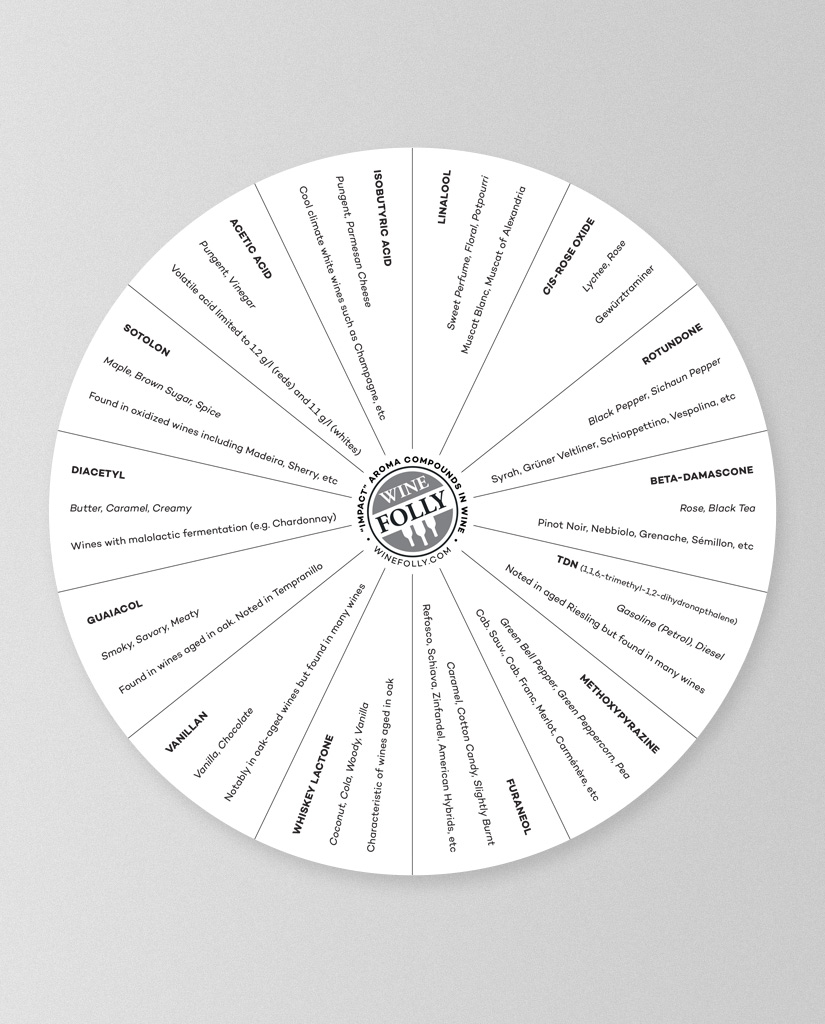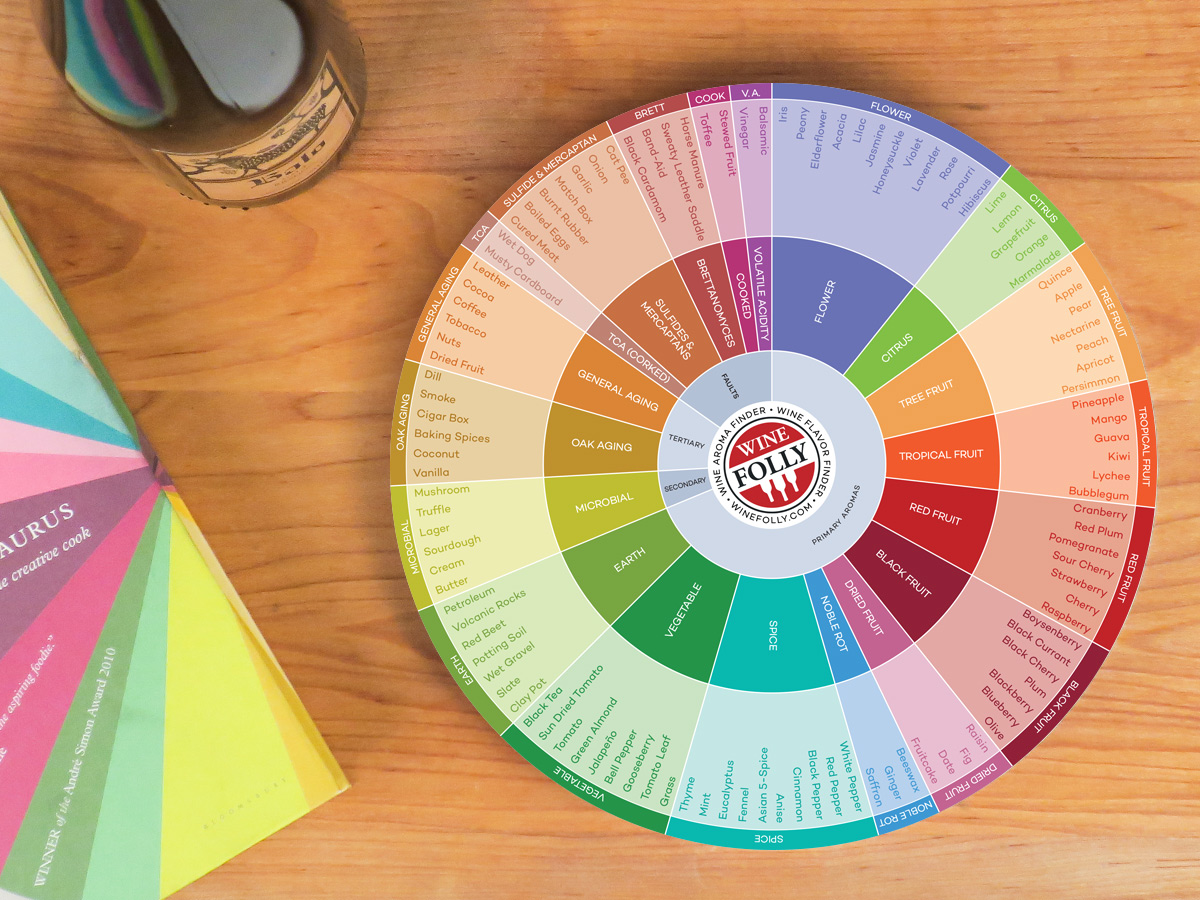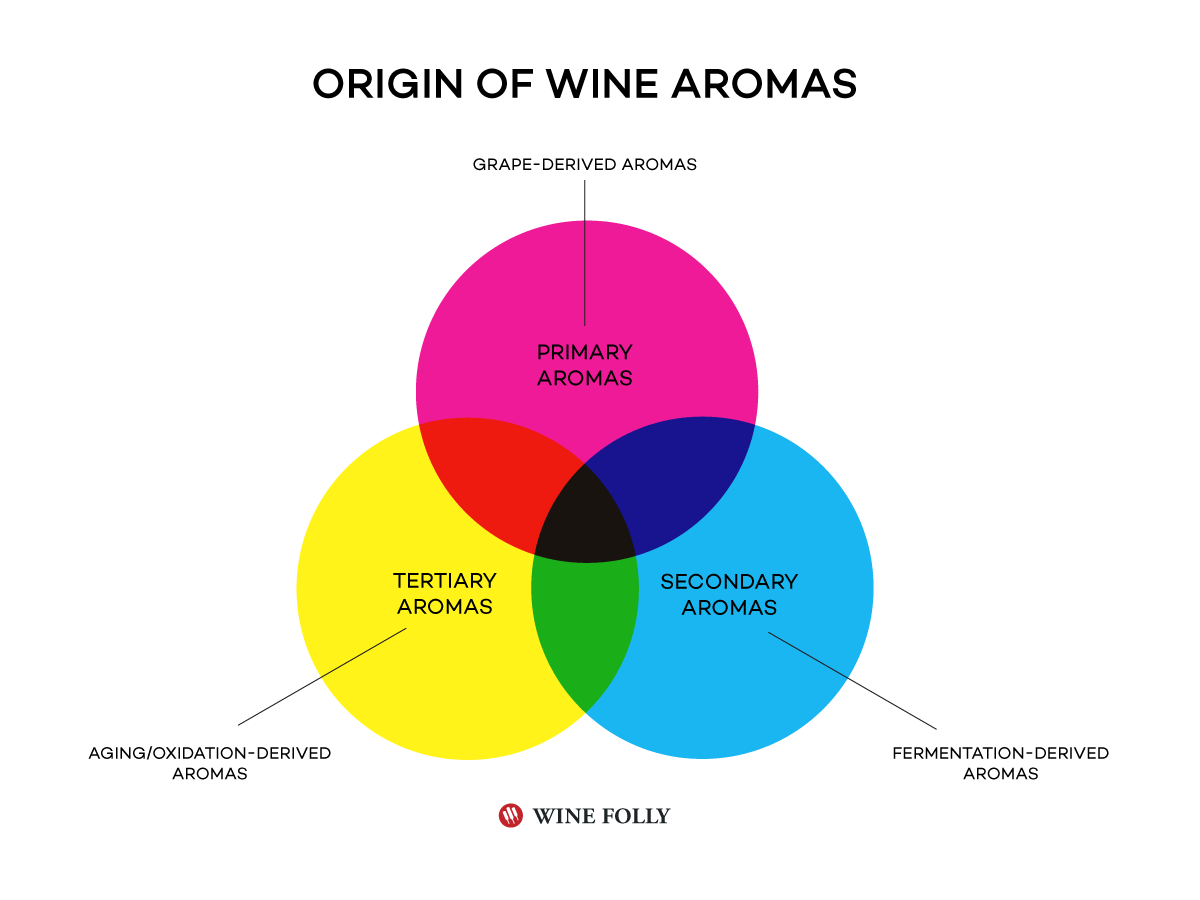A useful tool to have on hand while tasting, the wine flavor wheel is a visual glossary of wine terms organized by origin.
The lack of visual information in a glass of wine makes finding flavors challenging.
One of the biggest reasons for this is because wine is not a visual experience. Let me explain.
Introducing The Wine Flavor Chart
When we learn what oranges tastes like, we associate the flavor of an orange with what the fruit looks like. We create a mental picture of an orange’s features, which help dictate our memory of its flavor and embed it into our minds.
This works for all kinds of tastes and textures, and since wine has very few visual cues, it’s more difficult to create a strong memory of how it tastes.
The purpose of this chart is to help you quickly identify different aromas in wine with a color-coded flavor wheel. While we’re not the first to use a dendrogram (hierarchical tree diagram) for finding aromas in wine, you’ll find this particular chart to be both detailed and useful – especially if you’re a student of wine.
Basic Steps
- Smell the wine (try closing your eyes)
- Try to identify at least 3 different aromas using the flavor chart
- See where the aromas came from (grape, yeast, or aging)
Wine aromas are moderately complex. It’s possible to detect several hundred aroma compounds in a single glass of wine. To make things more interesting, different aroma compounds can interact with other aromas to create new, more complex aromas. Fortunately, our noses are relatively good at distinguishing flavors in wine. All it takes is practice!
Where Do Wine Flavors Come From?
- Primary Flavors: Grape derived aromas include fruit, flower, and herb aromas.
- Secondary Flavors: Fermentation aromas smell like cream, bread, mushroom, or butter.
- Tertiary Flavors: Aromas that develop with aging and oxidation include vanilla, nuttiness, coffee, and tobacco.
One of the best techniques to try – especially if you’re a visual thinker – is to close your eyes while sniffing your glass. This removes any visual stimuli and gives your brain a chance to associate the smell with a different mental image, be it lemon zest, a pot of hot cherry syrup, or a lawnmower full of fresh-cut grass. There are no boundaries to the practice of identifying exactly what the aroma brings to mind. There are so many strange stereoisomers found in wine, you should never feel weird saying what you smell!
Once you have a relatively good idea of what you’re sniffing, look to see if its included on the flavor chart. If it fits one of the flavors (or is close to it), you can see how the aroma was created (grape, yeast or aging).
Using Impact Compounds To Blind Taste

The backside of the flavor chart includes over a dozen impact compounds in wine.
Blind tasting is a process of identifying what variety(ies), vintage, and region a wine is without knowing any details about it. One of the primary ways sommeliers and other skilled tasters do this is through identifying impact compounds.
An impact compound is an aroma compound that is commonly associated with a limited selection of wines or a specific winemaking process. For example, a wine aged in new oak barrels, will always have some presence of the compound called Whiskey Lactone, which smells sweet and slightly resinous like coconut, dill, and vanilla cola.
Learn more about “Impact Compounds.”

